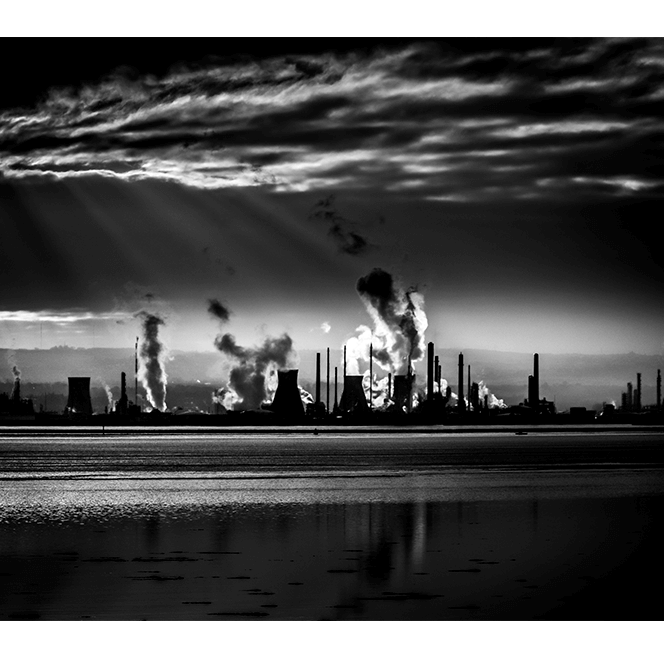Described by the UN secretary-general António Guterres as a ‘final warning’, the recently published synthesis report from the International Panel on Climate Change (IPCC) is only the latest clarion call for action. Detailing the ways in which human activities have resulted in unprecedented (and arguably irreversible) global warming, the IPCC conclude that by the end of this decade we will have exceeded the ‘carbon budget’ necessary to limit the rise in global surface temperature by around 1.5°C. The IPCC reminds us that even this threshold will herald both greater frequency and intensity in weather events: heatwaves, storms, droughts and floods, alongside the inevitable loss of marine biodiversity that will come with the acidification of oceans. The prognosis is therefore bleak but also characterised by a multifinality, in that the same causal factors will herald different social outcomes.
This is something which Global South scholars and practitioners have long emphasised with respect to ‘adaptation’. Specifically, that the approaches addressing climate change that have been forged in the Global North, and advanced through international political and development agencies, are typically a-historical and weighted in their own favour, unable (or unwilling) to register the differential vulnerabilities created by colonialism. Hence the late Archbishop Desmond Tutu often used his platform to call attention to the ways in which ‘adaptation is becoming a euphemism for social injustice on a global scale’.
Bearing something of a ‘chameleonic’ character, the language of adaptation has become key, with the UN Environment Program (UNEP) reporting that around 84% of countries have something in the form of a national plan, law, strategy or policy that is designated ‘national adaptation planning instrument’. For its part, the IPCC describes adaptation as a ‘process of adjustment to actual or expected climate change and its effects, which seeks to moderate harm or exploit beneficial opportunities’. It’s a definition used for short-term behavioural change such as shading windows and drinking water in heat events, using home energy efficiently and keeping warm in cold weather; to public education promoting broader community awareness and knowledge of weather-related risk at a population level, as well as in large-scale infrastructure projects, emergency management, hazard planning and associated risk assessments.
Notably, The UK Climate Change Act 2008 appeals to a mixture of these adaptation actions in providing a legally binding framework to cut UK greenhouse gas emissions, but foregrounds the UK’s ability to adapt to a changing climate with better in-land flood defences and preparedness for coastal erosion, energy security and the possible implications for agriculture. The governance of such adaptation meanwhile is partially devolved to the four administrations of the United Kingdom, and in the case of Scotland, there is a devolved statutory framework on adaptation set out through the Climate Change (Scotland) Act 2009.
Yet the ways in which adaptation is understood and interpolated across multiple levels in the policy process, however, consistently fails to grasp that certain social dynamics render some populations more or less vulnerable to the ongoing effects of climate change. Following Kelly and Adger, vulnerability here means “the ability or inability of individuals and social groupings to respond to, in the sense of cope with, recover from or adapt to, any external stress placed on their livelihoods and well-being”. In this meaning, vulnerability concerns a structured capacity to adapt to climate change and not the predictions of likely adaptive behaviour. There is an urgency and pressing need to reframe adaptation to climate change through this understanding, in order to see how ‘applications of adaptation hinge on multiple and intersecting ways in which people know, experience and deal with change’.
The social dynamics this brings into view are multiple, and include how Black and ethnic minority residents in cities have significantly less access to green spaces that white residents (in one study this was 11 times less). A crucial finding when we reflect that ethnic and racial minorities are disproportionately resident in the locations of Urban Heat Islands (UHIs), with health consequences in elevated rates of heat-related co-morbidities. It is moreover long established that socio-economic inequality is an impediment to insulated housing, and efficient energy use more broadly, across high income countries; and that gendered distributional effects are apparent in how violence against women and girls worsens in heat events, which, and as the European Environmental Bureau (EEB) has observed, is one of the ways in which ‘spatial and gender relations are closely intertwined’.
Remarkably, there is little consideration of these social dynamics in national level adaption strategies, illustrated in the UK by how the Technical Report for the third Climate Change Risk Assessment identifies sixty-one climate risks cutting across multiple sectors of society, but contains not a single mention of such matters. Yet we can anticipate that such disparities are intimately connected with health outcomes, and that they should not be uncoupled from other disparities in education, the criminal justice system or child welfare.
These are precisely the domains in which inequalities are entrenched and reproduced, and in which the social determinants of vulnerability to climate change are apparent and remain prevalent despite seeming compounding factors and variations. To include them requires us to think of vulnerability in adaptation as a multidimensional concept, something that registers differentiated levels of adaptive capacity in prevailing contexts of profound inequality and its structural implications, and the ways in which these may be incorporated (or overlooked) within climate adaptation planning and action strategies.
On the one hand, this imperative challenges both climate change researchers and funders overlooking these concerns, specifically to prioritise primary research examining how adaptation measures can attend to these inequalities across hazard planning, social vulnerability and long-term risk assessments. One the other hand, it is ultimately an invitation to think sociologically, and connect up differential exposures with differential vulnerabilities and differential access to support, in ways that re-centre social dynamics.
Nasar Meer is Professor of Sociology at the University of Edinburgh. Twitter: @NasarMeer


